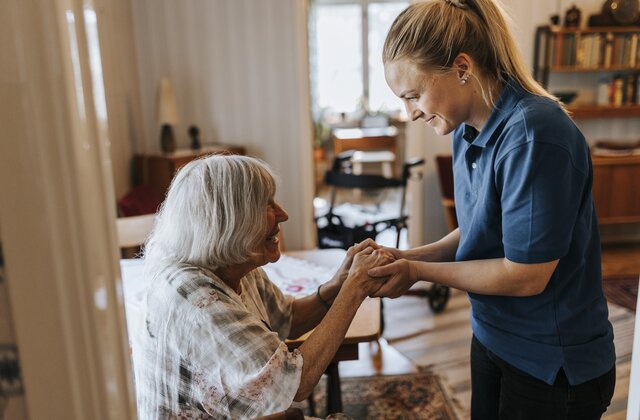As the population ages, the need for effective fall detection for elderly with arthritis becomes increasingly important. Arthritis, a condition that affects the joints, can severely impact mobility, making seniors more prone to falls. It’s crucial to address this challenge to ensure the safety and independence of our elderly loved ones.

Understanding Arthritis and Its Impact on Mobility
Arthritis is a common condition that causes pain and inflammation in the joints. It can lead to decreased mobility, making everyday activities challenging for seniors. The risk of falls increases significantly for those suffering from arthritis due to joint stiffness and balance issues.
The Importance of Fall Detection Systems
Fall detection systems are vital in preventing serious injuries. They provide peace of mind for both the elderly and their caregivers by ensuring that help is available immediately in the event of a fall. These systems use a variety of technologies to detect falls and alert caregivers or emergency services promptly.
Types of Fall Detection Technologies
Wearable Devices
Wearable devices, such as smart watches or pendants, are popular options for fall detection. They are equipped with sensors that detect sudden movements or impacts, triggering an alert to designated contacts.
Home Monitoring Systems
Home monitoring systems use a combination of sensors placed around the home to detect falls. These systems are ideal for those who prefer not to wear devices all the time. Learn more about privacy-friendly fall detection.
Smartphone Applications
Many smartphones now come equipped with fall detection capabilities. These apps utilize the phone’s sensors to detect falls and send alerts. They are a convenient option for seniors who are comfortable using technology.
Choosing the Right Fall Detection System
When selecting a fall detection system, consider factors such as ease of use, accuracy, and response time. It’s important to choose a system that suits the lifestyle and preferences of the elderly individual.
Considerations for Seniors with Arthritis
For seniors with arthritis, comfort and accessibility are key. Look for devices that are easy to put on and take off, and ensure that the system can be activated easily, even with limited mobility.
IoT sensors are revolutionizing daily living for seniors, offering enhanced safety and convenience.
Benefits of Fall Detection for Caregivers
Fall detection systems provide caregivers with peace of mind, knowing that their loved ones are protected. These systems also allow seniors to maintain their independence while ensuring help is available when needed.
The Role of Technology in Elderly Care
Technology plays a crucial role in modern elderly care. From smart home devices to wearable health monitors, technology is enhancing the quality of life for seniors. Discover more about smart elderly care solutions.
Promoting Independence and Confidence
By utilizing fall detection systems, seniors can live more independently and confidently. These systems provide a safety net that allows them to engage in daily activities without the constant fear of falling.
How to Encourage Use of Fall Detection Systems
Encouraging seniors to use fall detection systems involves educating them about the benefits and ensuring they are comfortable with the technology. Family members and caregivers can play a crucial role in this process.

FAQ Section
What is the best fall detection system for seniors with arthritis?
The best system depends on individual needs, but options like wearable devices and home monitoring systems are popular. Ensure the system is easy to use and comfortable for those with arthritis.
How do fall detection systems work?
Fall detection systems use sensors to detect sudden movements or impacts. When a fall is detected, the system sends an alert to designated contacts or emergency services.
Can fall detection systems prevent falls?
While they cannot prevent falls, these systems provide a rapid response, reducing the risk of serious injury by ensuring help arrives quickly.
For more information on fall risks and prevention, visit the CDC’s website.
This article contains affiliate links. We may earn a commission at no extra cost to you.






